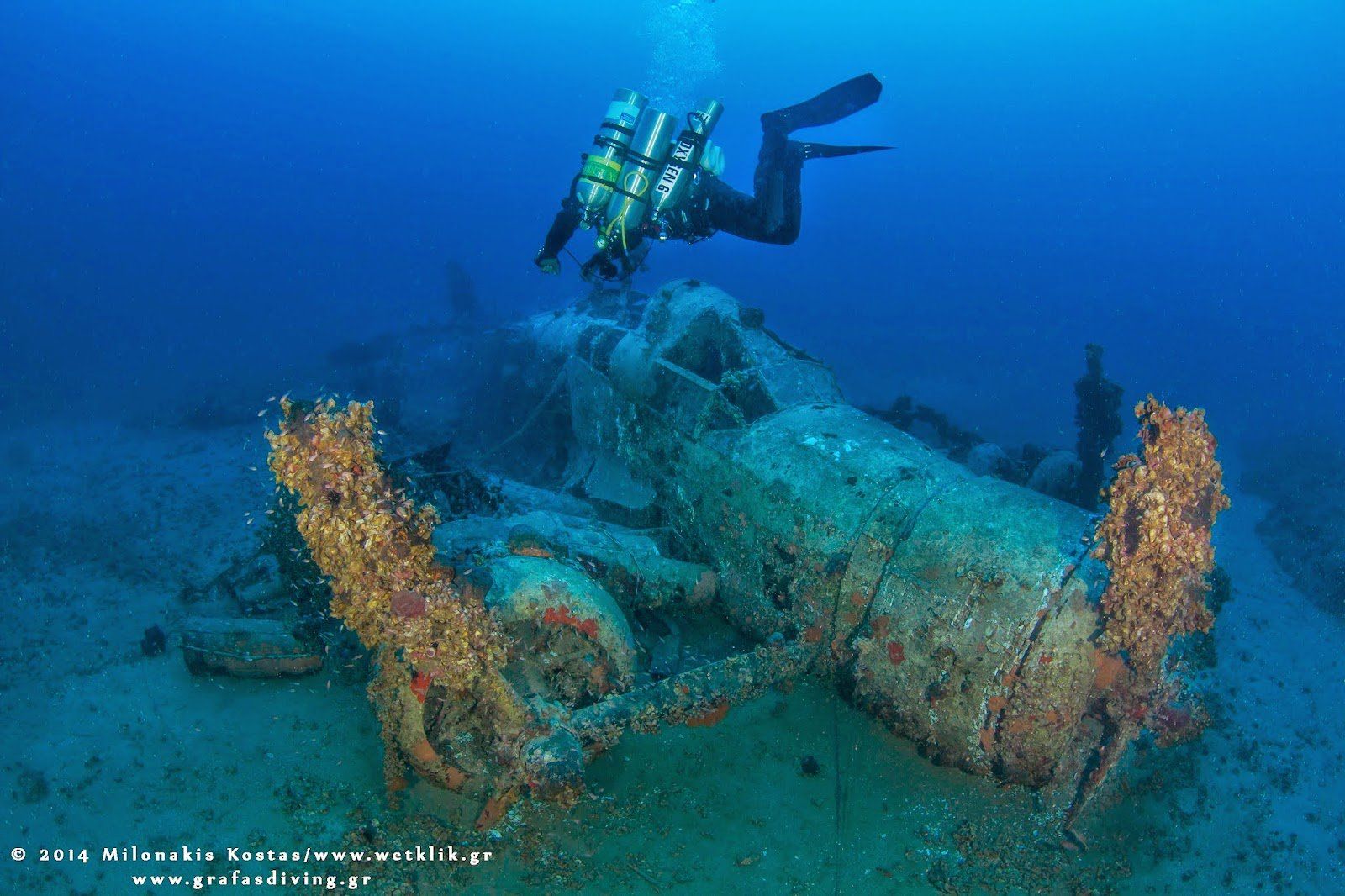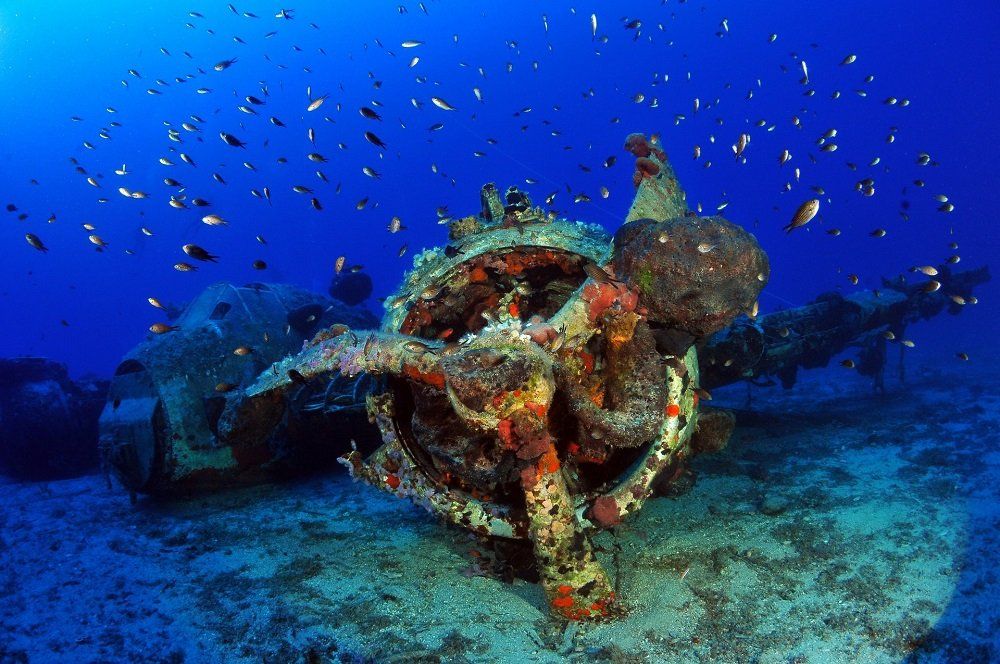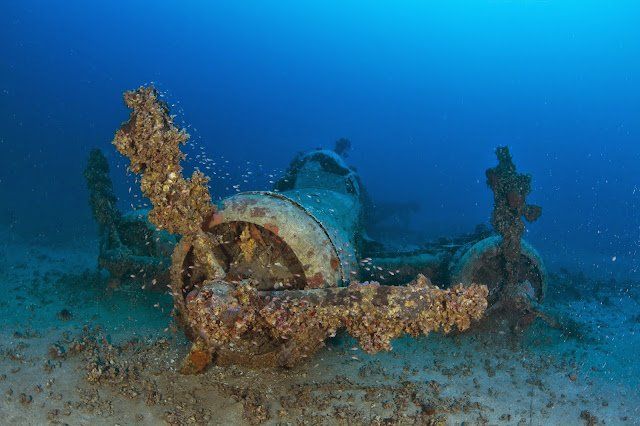

SM 79 SPARVIERO-POROS|PECIOS HISTÓRICOS
Un descubrimiento histórico importante, el primer avión italiano de la Segunda Guerra Mundial que se ubicó en Grecia fue documentado fotográficamente por el equipo de buceo de Anthony Grafas.
Se trata de un bombardero trimotor Savoia - Marchetti SM 79 'Sparviero “, (“ Halcón ”), que fue identificado originalmente hace unos años, por el buzo profesional Noulis Spourlakos a una profundidad de 59 metros, en la costa sureste de Poros , a solo 200 metros de la costa y fue investigado e identificado casi inmediatamente después del descubrimiento, por los buceadores George Karelas y Kostas Milionis.
El avión era un bombardero italiano, que fue utilizado por la Real Fuerza Aérea Italiana durante la Segunda Guerra Mundial. El naufragio está asentado sobre un fondo marino arenoso a una profundidad máxima de 59 y un mínimo de 57 metros. Según las investigaciones realizadas por Ferdinando D’Amico para el UFR Team, el grupo griego de buzos profesionales que encontraron el avión, el avión debería / podría ser el MM. 22293 codificado "B2-09" de la unidad ANR Torpedo-bombardero, perdido en la noche del 4 al 5 de agosto de 1944.
Esa noche, ocho S.79 del “Gruppo Buscaglia” despegaron del aeródromo de Eleusis para una misión contra un convoy aliado de 30 buques mercantes escoltados por 4 buques de guerra al NO de Tolemaide (hoy Ad Dirsyah, Libia).
Debido al mal tiempo, solo tres S.79 encontraron y atacaron el convoy, causando tres impactos en el buque mercante "Samsylarna" que se hundió. Eran los S.79 de Merani, Morselli y el Teniente De Lieto.
Según el diario de la unidad, “… cinco aviones regresaron sanos y salvos al aeródromo de Eleusis, y uno de ellos se dañó debido a que el tren de aterrizaje izquierdo no se extendía correctamente. Un S.79 aterrizó en Creta, uno resultó desaparecido en Creta. El último S.79 abandonó por falta de combustible cerca de Argos; la tripulación resultó ilesa y fue rescatada de manera segura".
Los miembros de la tripulación a bordo del MM. 22293 en esa misión fueron: Piloto - Marcello Perina; 2º piloto - Gianfranco Neri; Ingeniero - 1 ° Marcello Manfrino; Radioperador- Giuseppe Apolloni; Armero - Franco Zanchi. Todos escaparon ilesos del amaraje.
El fuselaje de la aeronave se ha modificado a lo largo de los años debido a los fuertes revestimientos bentónicos. Las dos alas del avión son visibles en su lugar. Además del cuadro podemos ver los depósitos de combustible y las ruedas que se han mantenido en posición de vuelo. Los instrumentos, el panel de la cabina, se han mantenido lugar, aunque el intenso recubrimiento bentónico no los hace muy visibles.
Translate and adapted by Caco Pradas

SM 79 SPARVIERO-POROS|HISTORIC WRECKS
